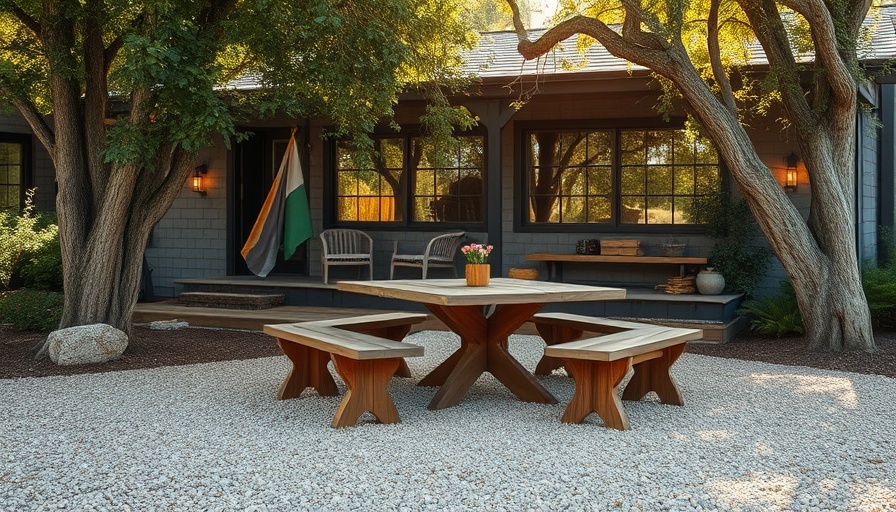
Unveiling the ORCA Glow-up: A Garden's Transformation
In an innovative revival of a home designed by iconic Southern California architect Cliff May, the art of landscape design takes center stage. The renowned firm ORCA has embarked on a transformative journey in Coronado, California, where the historic elegance of May's architecture meets contemporary sustainability. By focusing on native plants and natural materials, ORCA aims to foster a deeper connection between the home and its surrounding landscape.
Historical Context: Cliff May and His Architectural Legacy
Cliff May, often heralded as the father of the California ranch house, championed designs that embraced the outdoors, providing a seamless flow between indoor and outdoor spaces. His philosophy was about living intricately with nature—a sentiment that resonates profoundly with ORCA's approach. The current project in Coronado exemplifies this ethos, showcasing how modern design can honor historical architecture while enhancing functionality. With May's unique style in focus, this garden renovation seeks to celebrate both past and present.
Creating Community Spaces: The Role of Design in Neighborhood Interaction
The homeowners envisioned a garden not just as a personal retreat but as a space for communal gathering. Molly Sedlacek of ORCA emphasizes the importance of fostering relationships within the community through landscape architecture. "This home, positioned next to a busy street, demanded a balance between privacy and an inviting presence," she explains. The design incorporates features that encourage social interaction, such as gathering areas adorned with organic materials and thoughtful plant selections.
Plants as Allies: The Importance of Native Flora
At the core of ORCA's mission is the commitment to biodiversity. The use of native plants is not only environmentally friendly but also crucial for local ecosystems. Incorporating species that provide shelter and habitat for wildlife helps reinforce the interconnectedness of all living things. Sedlacek highlights this in her design, stating that the choice of plants supports a thriving environment, both for the residents and the wildlife that share the space. The garden becomes a dynamic entity—constantly changing and supporting life.
Design Elements: Bringing the Outdoors In
The ORCA glow-up introduces unique features that ingeniously blend the house with its natural surroundings. One standout element is the incorporation of 'dino eggs,' boulders expertly cut to form stepping stones that connect various garden zones. This playful yet practical design invites children to explore nature in a tactile way, reflecting a home where outdoor activities thrive. Additionally, the use of rammed earth pavers sourced from Oaxaca brings an earthy aesthetic that resonates with the sea and sky of Coronado, completing the narrative of harmony between structure and environment.
Future Trends in Sustainable Landscaping
This project not only showcases a passionate commitment to sustainable landscaping but also points towards future trends. Homeowners are increasingly taking notice of their landscapes as integral components of their daily lives, influencing everything from property values to personal well-being. Employing natural materials, focusing on biodiversity, and creating community-friendly spaces are strategies that set the stage for how we think about residential landscaping in the years to come.
Conclusion: A Call to Join the Movement
As we witness the transformation of this historic Cliff May home, it’s clear that sustainable landscaping is more than a trend—it’s a vital movement addressing urgent environmental and social needs. Homeowners and designers alike can take inspiration from ORCA’s approach, seeing their gardens as not just aesthetic spaces but as vital ecosystems. Whether you're planning a significant renovation or a small garden project, let this case study remind you of the profound impact that thoughtful landscaping can have on community, environment, and personal well-being. Ready to breathe new life into your outdoor area? Start planning your project today, and embrace a more sustainable tomorrow!
 Add Row
Add Row  Add
Add 




Write A Comment